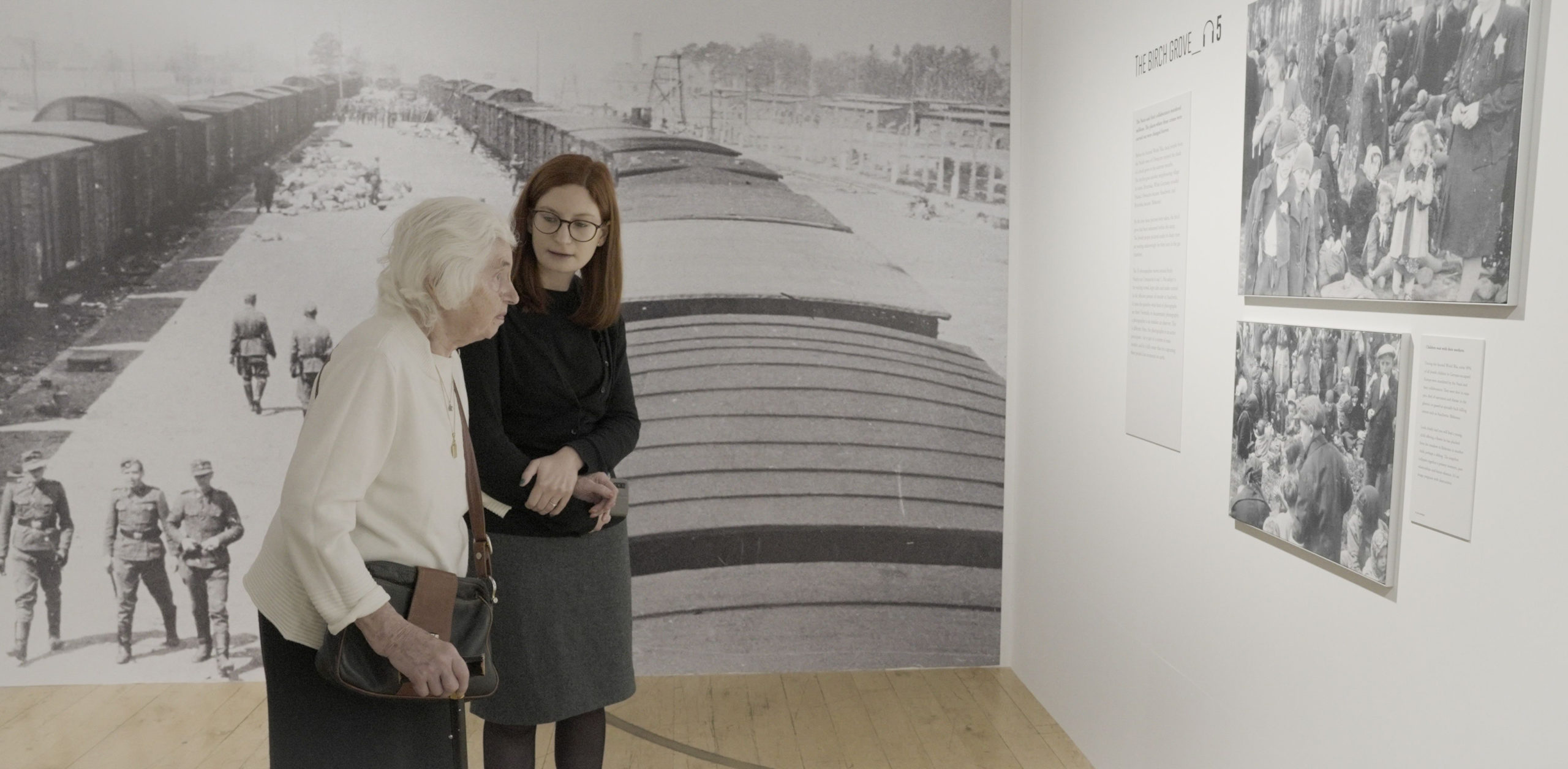
Featured Item

A photographic exhibition to defy the Nazis
The Nazis “tried to destroy and erase the Jewish nation. Even more than that, they tried to destroy the memory of the Jewish nation”, said Israeli Ambassador Eli Belotsercovsky at the opening of the Seeing Auschwitz photographic exhibition at the Johannesburg Holocaust & Genocide Centre (JHGC) on 13 November.
They also tried to erase evidence of the terrible atrocities they committed, Belotsercovsky said.
The award-winning Seeing Auschwitz exhibition, developed by one of the world’s leading experts on the Holocaust, includes more than 100 scarce images of victims and perpetrators at what was the largest killing centre in human history. The exhibition also presents snapshots of the systematic extermination process and scenes of everyday life in Auschwitz, as well as audiovisual testimony of survivors. It’s open in Johannesburg until the end of March 2023. Entry is free.
“The Seeing Auschwitz exhibition, which has been brought to South Africa by the JHGC, allows us to see photographic evidence and proof of the crimes of the Nazis in Auschwitz,” Andreas Peschke, the German Ambassador to South Africa, said at the opening. “The images we see in the exhibition are those that weren’t destroyed or didn’t disappear, so this is an exhibition to make us think, to sensitise us, to make us look at the world and our role in it with critical eyes.”
For example, the exhibition shows a picture taken of a Jewish prisoner by an armed and uniformed Schutzstaffel [SS] officer. No permission would have been asked for, reads the statement in the exhibition. The photographer just saw the prisoner as an interesting “object”, an example of the “unproductive”.
Another photograph in the exhibition shows a group of Hungarian Jews arriving at Auschwitz in 1944. Most people in this image were sent straight to the gas chambers and murdered.
The exhibition includes a map of the Auschwitz concentration camp complex created by the camp administration, with drawings of slave labourers engaging in backbreaking work while SS men sunbathe at a nearby resort.
Although most of the photos were taken by the perpetrators, the exhibition does present less well-known images created by the victims themselves and the Allies, and photos found in wallets, luggage, or lockets belonging to people arriving at Auschwitz.
“These pictures are no less valid today than they used to be,” Belotsercovsky said. “When we think of Auschwitz, the word brings up a strong dissonance in our minds, something that I think is an almost unbearable thought. For most of us, we try to put these thoughts aside.”
Andrzej Kanthak, the Polish ambassador to South Africa, said the Nazis established the Auschwitz concentration camp in 1940. “The first transport of 728 Polish political prisoners arrived on 14 June 1940. Auschwitz Birkenau was opened two years later, and became the main site for the extermination of Jews. The first mass transport of Jews to Auschwitz departed on 25 March 1942. The Nazis killed at least 1.1 million people in Auschwitz. Most of them were Jews.”
The campsite was declared a national memorial site in 1947, Kanthak said. “All over the world, Auschwitz has become a symbol of terror, genocide, and the Shoah.”
Oliver Grünbacher, the deputy head of mission in the Austrian Embassy, said, “In 1938, Austria had more than 210 000 Jewish citizens. More than 64 000 were killed, many of them in concentration camps. Taking responsibility for a dark chapter in our history is important. For this reason, Austria changed its citizenship laws in 2019, making it possible for descendants of persons who had to flee from Austria during the Nazi regime to claim their Austrian citizenship back. I’m delighted that we can welcome back a growing number of Austrian citizens worldwide, including in South Africa.”
Professor Michael Katz, the chairperson of the JHGC board, said, “The Holocaust didn’t start with Auschwitz. The crematoria of Auschwitz didn’t spring up overnight. It was the product of a slippery slope – prejudice, hate speech, discriminatory laws, detention centres, and then gas chambers. This slippery slope is really the lesson of the Holocaust. What also follows from this is how ordinary, decent people can get caught up in this slippery slope. This is the challenge all of us face today.”
Grünbacher used an incident in Vienna in 2019 to illustrate why it’s important not to give way to antisemitism. “Oversized photographs of Holocaust survivors, which were exhibited in a public space, were slashed with knives and smeared with sausages,” he recalled. “In response, the public rose up and protested. Young people of very diverse religious and cultural backgrounds sewed them back together and protected them 24/7.”
Peschke said following Russia’s invasion of Ukraine, it was interesting to note that Auschwitz was liberated by the Soviet Army, and its gate was opened by a Ukrainian soldier.
He said the Seeing Auschwitz exhibition encourages discussion about atrocities such as the war in Ukraine and African issues like antisemitism, xenophobia, and gender-based violence.
“Seeing Auschwitz includes South African connections,” said Tali Nates, the director of the JHGC. “The aerial photographs, for example, were taken in mid-1944 by the South African Air Force’s 60 Squadron. Portraits in the exhibition include those of Auschwitz survivors who settled in Johannesburg.”
Said Kanthak, “The exhibition gives us an opportunity to pay tribute to the memory of all victims, those who perished and those who survived the horrid crimes of the Holocaust, genocide, and other wars or atrocities.”










